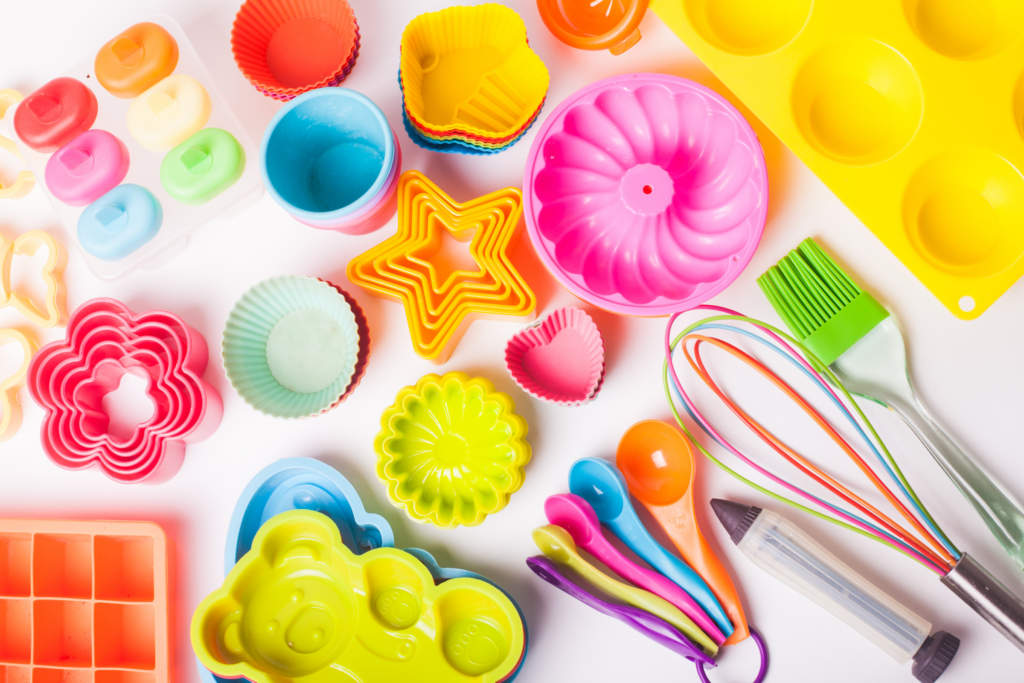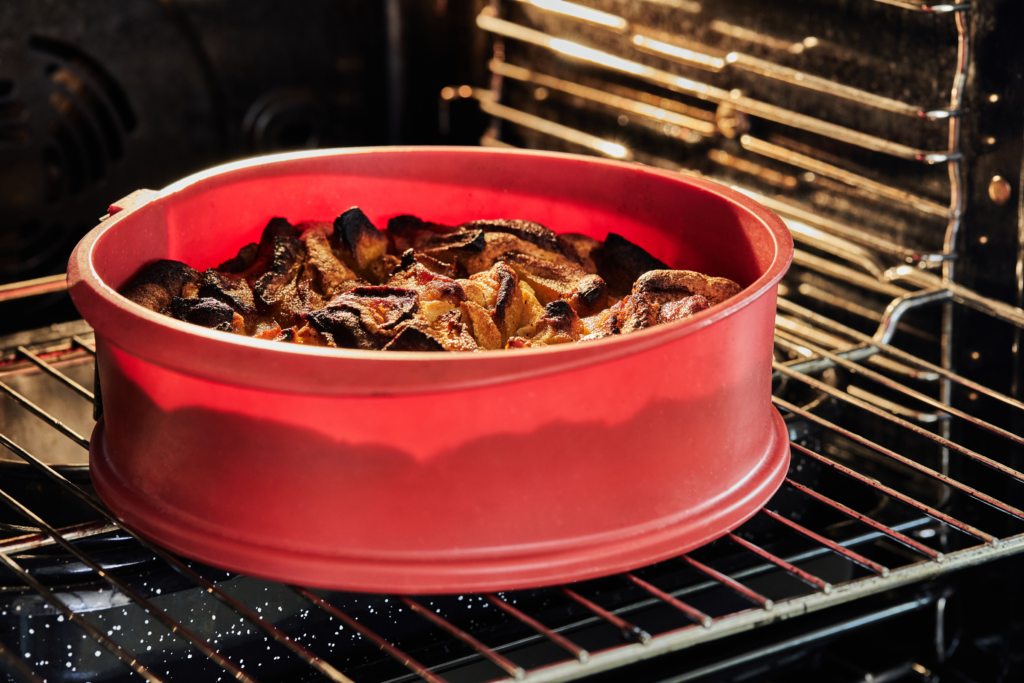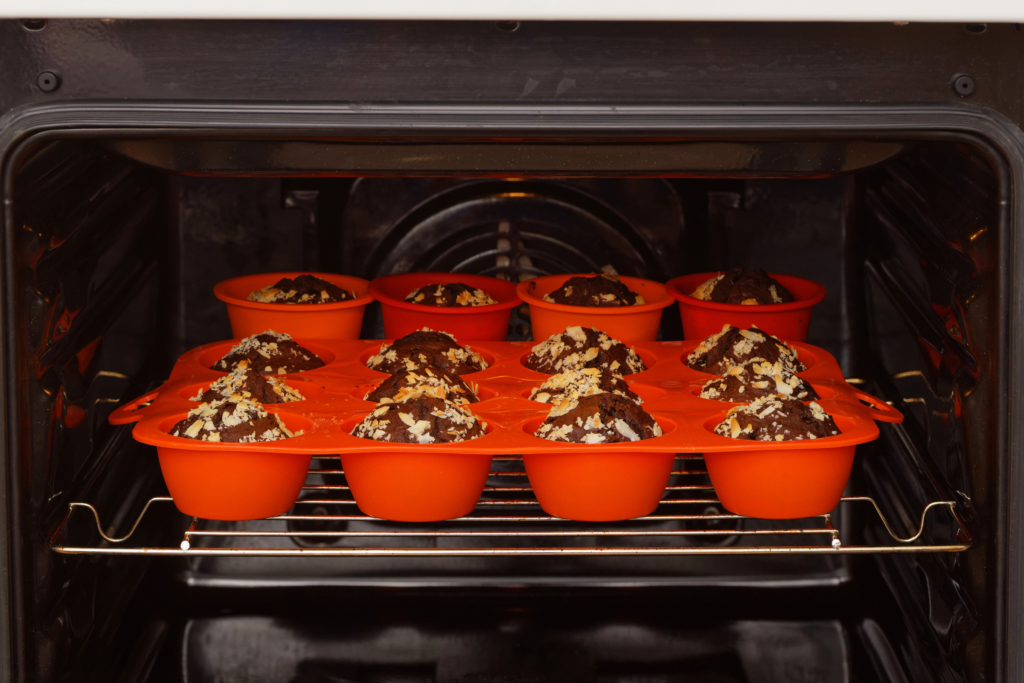Can You Use Silicone Molds in an Air Fryer? (5 Benefits, Watch Outs, & quick tips)
Air fryers and silicone molds are both highly convenient in the kitchen. To make what’s easy even simpler, can you combine the two? Can silicone molds be used in an air fryer? Is it safe to use silicone in an air fryer?
You can safely use silicone molds in the air fryer if you keep its limitations in mind. Since silicone is heat-resistant, it won’t melt or add unsafe chemicals to your food. Silicone molds will flex, so be cautious when removing them from the air fryer.
Silicone molds and cookware have several more features in addition to the above benefits and limitations. We will cover whether it is safe, the pros and cons, and a few helpful tips.
Can You Use Silicone Molds in the Air Fryer?
You can put silicone molds in your air fryer and cook or reheat your foods safely. Firstly, silicone is made of silica (sand). Thus, no harmful chemicals could leech into your food, even when cooking at extremely high temperatures.
That said, you should keep a few things in mind when using silicone molds in an air fryer.
You want to avoid blocking airflow since air fryers work like convection ovens. Don’t use a silicone mold that will take up the entire space.
When using silicone molds, remember that the material is flexible and will flop if you don’t grab it securely.
Furthermore, if you have concerns about foods sticking to your metal cookware’s surface, silicone molds would be wise. Silicone is naturally nonstick.
How to use Silicone Molds in air fryer
Using silicone molds makes cooking simple. With its plentitude of benefits, cooking couldn’t be easier.
However, there are tips to help you use silicone molds properly. Here are a few things to consider and look out for.
1. Always consider temperature
Before you start using it, you need to understand the temperature your silicone mold bakeware can handle. Most silicone molds can endure high temperatures, up to 450 degrees Fahrenheit. But bear in mind that all bakeware isn’t equal.
Additionally, silicone cookware behaves differently than, say, metal cookware. A good rule of thumb when baking with silicone is to reduce the baking temperature by 10 degrees. You should extend the time by 5 to 10 minutes, checking occasionally.
2. Grease can be helpful
You won’t always need to grease your silicone mold. However, greasing or using a cooking spray can make baking or cooking in a silicone mold a breeze. It can make removing the food from the mold incredibly easy. Washing will be a breeze, too.
3. Consider silicone mold sizes
You don’t want to obstruct airflow when cooking in an air fryer. Use smaller molds in the air fryer. These molds will also make managing the cookware simple.
4. Wash immediately after using
Soak your silicone mold in hot, soapy water after any use. This will make sure it lasts as long as possible. Don’t use abrasive cleaning methods on the silicone.
Benefits of Silicone molds & cookware

If you have silicone utensils in your kitchen, then you know the benefits of using them. But if you don’t have silicone utensils, you may wonder how beneficial they are and why you should have them in your kitchen. Firstly, what are they?
Silicones are large molecules formed of diverse subunits. These polymers are made up of siloxane. Silica is present in sand, extracted, and then processed into silicon. It undergoes various processes to form the silicone material you’re seeing today.
That is a simple explanation of what silicone is. Here are the various forms and applications of silicone:
- Sealants in construction & plumbing
- Medical applications such as catheters
- Kitchenware in the form of parchment paper, nonstick sprays, and utensils
The second question you should ask is why you should consider using silicone in the kitchen. What makes using cooking utensils and tools in the kitchen important?
First and foremost, understand that silicone cooking utensils and tools boast properties that make them superior to kitchen tools made from wood, rubber, and metal, including glass material. Not to mention, you can find silicone items in vibrant hues.
Let’s forget about the appeal and see how silicone items compare to others. In other words, here are the properties silicones have:
1. Silicone is heat-resistant
Silicone is stable, non-reactive, and, above all, can withstand extreme temperature changes. In other words, its physical structure and properties would remain intact even when subjected to extremely low or high temperatures.
Silicone can withstand temperatures as low as -67 degrees Fahrenheit and as high as 500 degrees Fahrenheit.
Outside of direct cooking uses, you can find silicone potholders that do a great job in helping you to grab and remove hot pots or a dish from an oven.
2. Longer shelf-life
The long shelf-life of silicone cooking utensils and tools has also made them a must-have in the kitchen. If used appropriately, silicone items can last more than ten years. You won’t have to worry about cracking it from dropping or any other common concern.
3. Stain resistant
Above all others, this is one property that sets silicone apart. If you’ve ever used a rubber spatula to stir a spaghetti sauce, you know how quickly that stain sets in.
Excitingly, silicone spatulas won’t get stained even if you use them to stir dark foods. Additionally, they are super easy to clean and retain their colors for a long time.
So, how are silicone spatulas able to resist stains? It is because they are non-porous. This ensures it doesn’t absorb any color from food. They are also scentless and don’t absorb odor from food either.
The cherry on top? They are dishwasher safe.
4. Silicone is anti-bacterial
The non-porous quality of silicone also makes it anti-bacterial. While it won’t kill bacteria, it does discourage it from growing. Unlike wooden utensils, where bacteria can inhabit and grow in their pores, they can’t do the same on silicone utensils.
5. Silicone is anti-slip
The anti-slip property of silicone makes it ideal for diverse tasks such as grilling, cooking, baking, and serving. You can even use them to hold your hot plate to ensure it doesn’t fall off your hands.
Have you tried drying your glasses and cups in a silicone trivet? Give it a try, and you’ll be glad you did. Why? Your glass and cups won’t slip off and shatter. Using the silicone trivet is a simple way to safeguard your favorite kitchenware.

What To Look For When Buying Silicone For an Air Fryer?
The market is awash with various silicone molds. Thus, you’ll find relatively thin silicone utensils, some looking fragile.
These types of silicone aren’t the best option to use in an air fryer, given the high amount of heat the appliance produces. Instead, go for silicone that is much thicker and sturdier.
In a nutshell, before you buy any silicone kitchenware, ensure it is 100 percent silicone. Quality silicone molds should not have any other fillers.

What If You Don’t Have Silicone Molds?
If you don’t have silicone molds to use in the air fryer, you can seek other alternatives. Just ensure any silicone mold alternatives you plan to use are oven-proof. Otherwise, you might not get the result you desire.
Here are some air fryer-safe silicone mold alternatives you can use:
Ceramic containers
These containers imply ceramic cookeries such as bowls, plates, and even cups. You’ll also find them in different forms, such as ceramic containers with metallic coating and ones without metallic coatings.
Luckily, both types of ceramic containers are ideal for use in an air fryer. They tend to keep their properties, structure, and shape under high temperatures.
However, ensure the ceramic container doesn’t have any artwork or painting.
Glass containers
Glass containers’ “see-through” design makes using them for cooking easier. You can check your food regularly and ensure you get the desired doneness.
Glass containers don’t hold on to past flavors. Thus, your foods won’t have flavors from past foods cooked in the same glass container.
However, ensure the glass is oven-safe and endeavor to cook slowly.
Cast iron skillets and pans
You can use these in your air fryer safely. Just ensure the lid you’re using is also oven-safe.
Stainless steel pots, bowls, and pans
You can comfortably put stainless steel cookware in your air fryer. They are oven-safe. But ensure your stainless pots, pans, or bowls don’t have plastic handles or any other attachments that cannot withstand high heat.
Non-stick Teflon containers
You can throw Teflon containers in your air, which would come out the same way it went into the appliance.
Interestingly, Teflon’s nonstick property means your food won’t stick to the container. Your muffin will come off once it’s ready for consumption.
Summary of Can silicone molds be used in an air fryer?
Yes, silicone molds can be used in an air fryer as long as you don’t use them above 450 degrees Fahrenheit and keep in mind silicone’s properties.
In general, silicone boasts remarkable properties that make it a must-have in the kitchen. They are stain-resistant, would tolerate temperature changes impressively, and boast a longer lifespan.
However, we also discussed alternatives you can use instead of silicone molds. These include glass containers, ceramic containers, Teflon, and cast iron skillets.
Let Us Know How We’re Doing!
Did this expertly prepared resource answer your question?
Do you have another question about home maintenance, home improvement projects, home appliance repair, or something else?
Get more information, send in questions and keep the discussion going by contacting the I’ll Just Fix It Myself company customer service team at at 1-800-928-1490 or Email us at [email protected]
